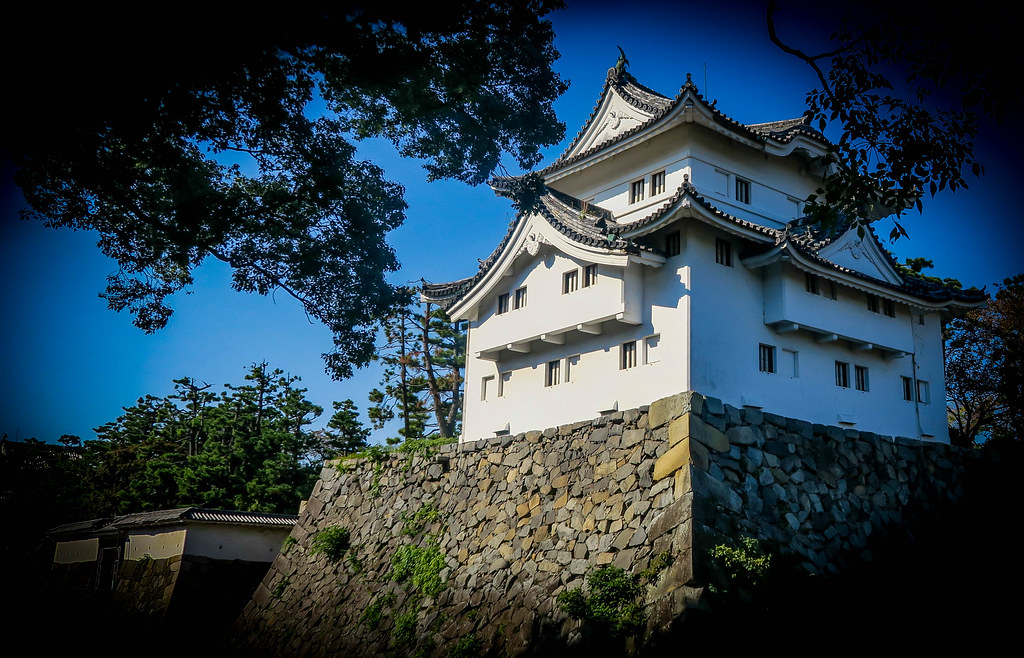
Earlier this month, I traveled to Nagoya, Japan to visit Nagoya Castle.
And I will say it was one of the most breathtaking experiences that I have ever seen.
Just from a distance and seeing the castle, you are literally in awe.
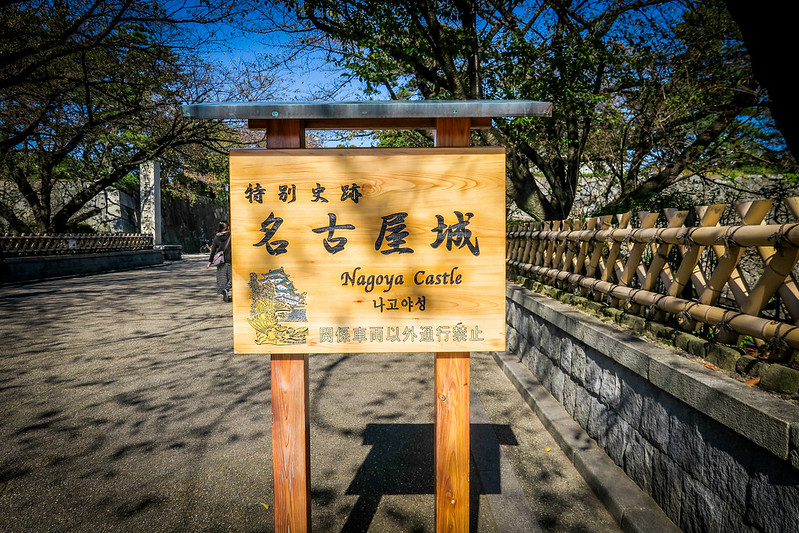
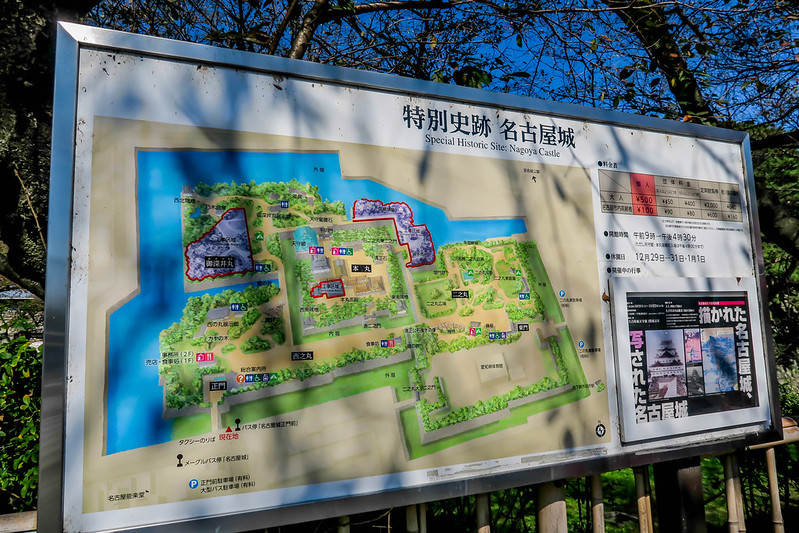



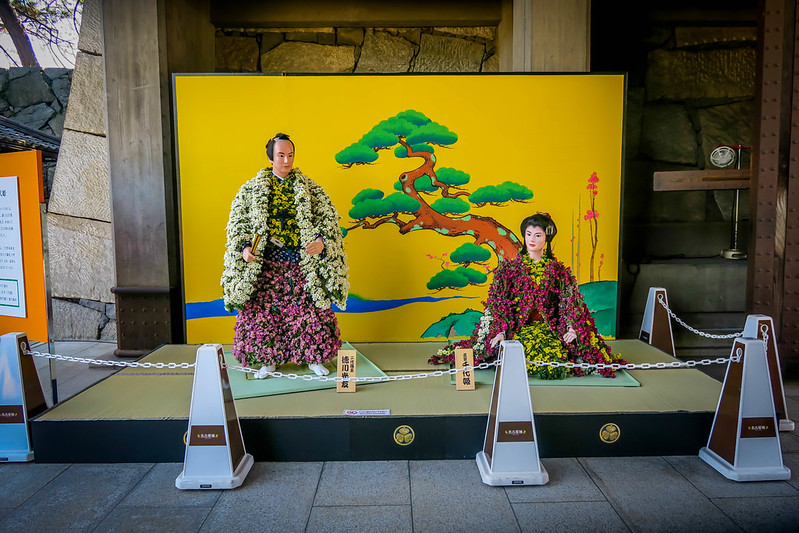
According to Wikipedia:
Nagoya Castle (名古屋城 Nagoya-jō) is a Japanese castle located in Nagoya, central Japan. Nagoya Castle is known for its unique “connected-donjon” style of construction, with the main donjon of five stories on five different levels and a smaller donjon of two levels joined by an abutment bridge.
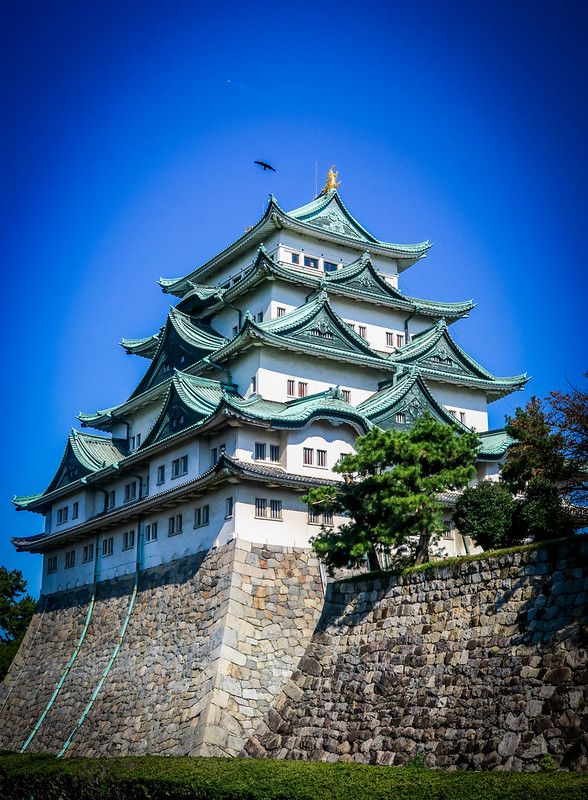
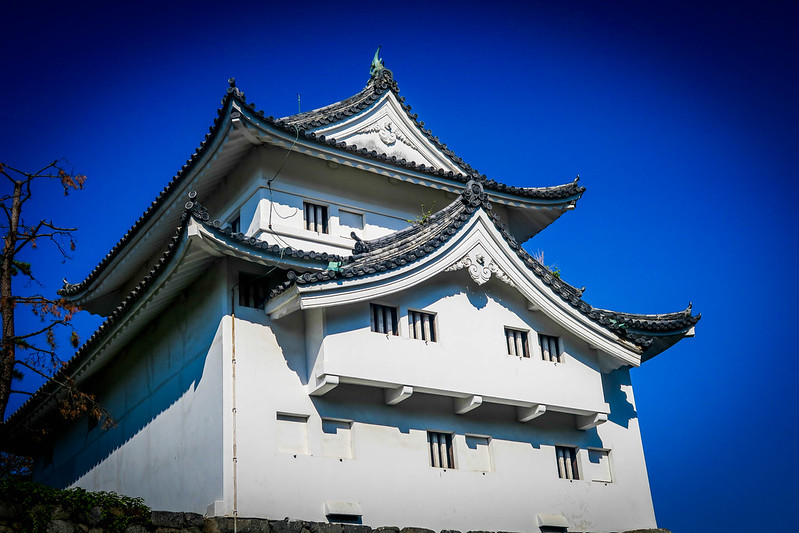
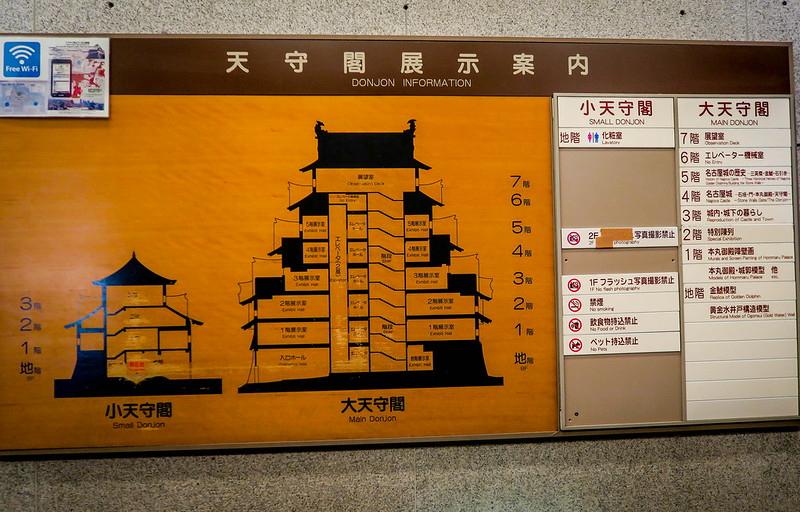
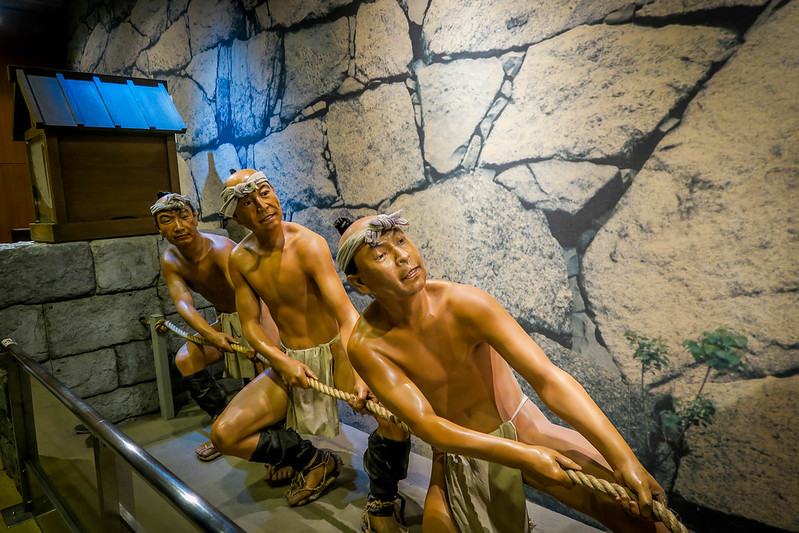

On one of the levels, you must pull a rope to see if you can pull the bricks and three statues of men are shown pulling the bricks. When it came to people pulling, people averaged over 20 or 30.
I noticed a group gathering around me, when it was my turn to pull, I just pulled and really didn’t put too much into it and noticed that people started clapping and then I looked and sure enough, it was over 50. So, that was interesting.

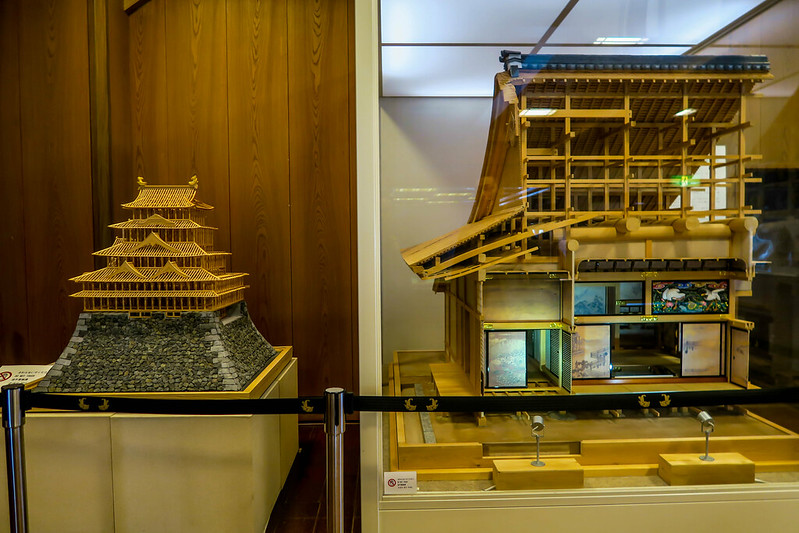
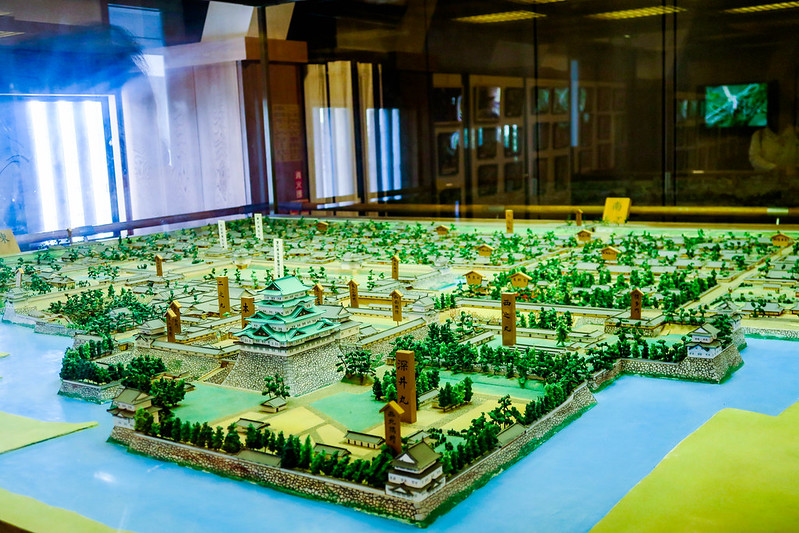
Going towards the next floor level of the castle, you get to see how the castle was constructed by models and how things looked back then.

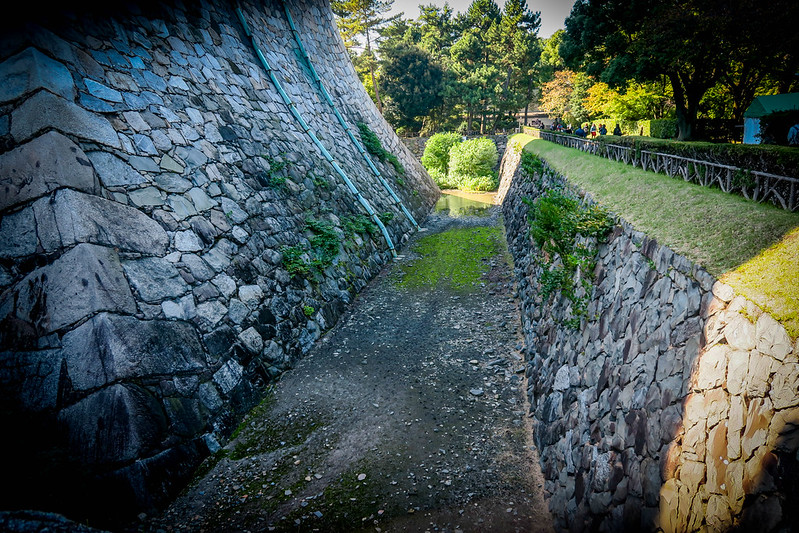
Called the “Tatsumi” turret, the southeast turret looks like it has two stories, but actually has three. The white coating on the mud walls made the structure water- and fireproof. The southeast turret is similar to the southwest turret. The construction adheres to the original design by the Tokugawa. The symbol of a hollyhock, the crest of the Tokugawa family, can be seen on the ridge-end tiles. The turret has been designated an Important Cultural Asset.
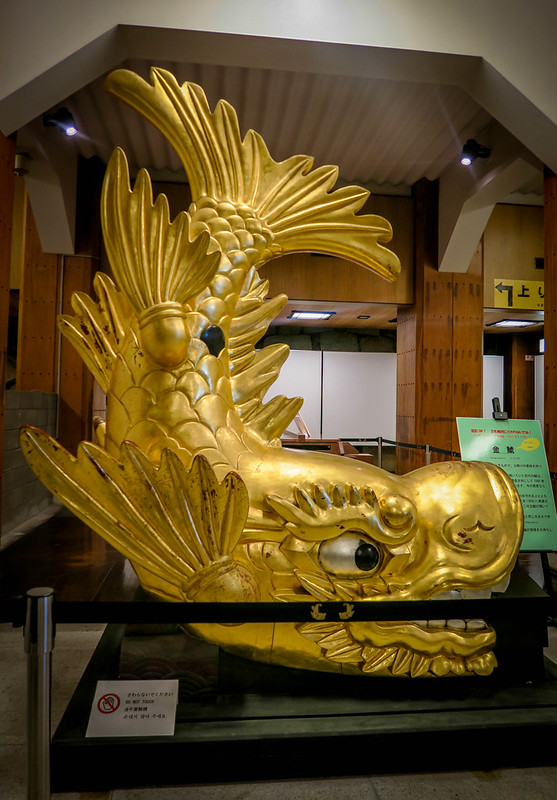

On either end of the topmost castle roof are two golden tiger-headed carps, called kinshachi (金鯱). This motif was used as a talisman to prevent fires. They first appeared in the Muromachi era (1334–1400) as a symbol of the lord’s authority.
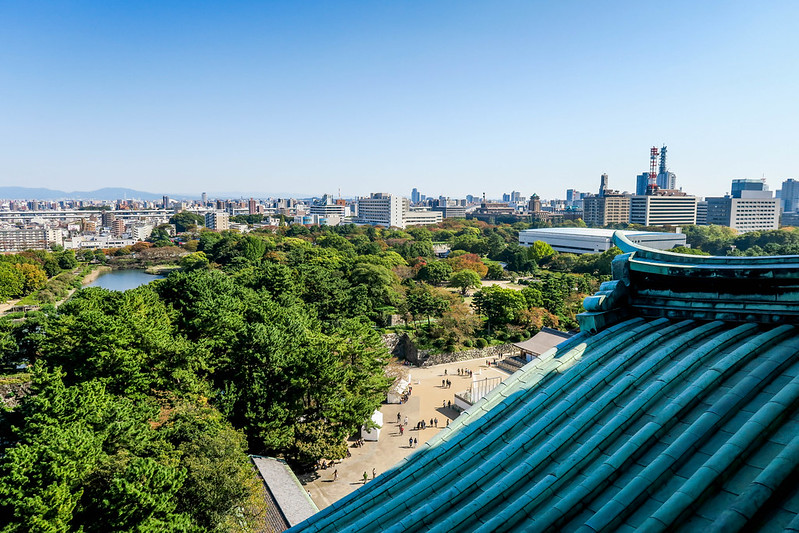
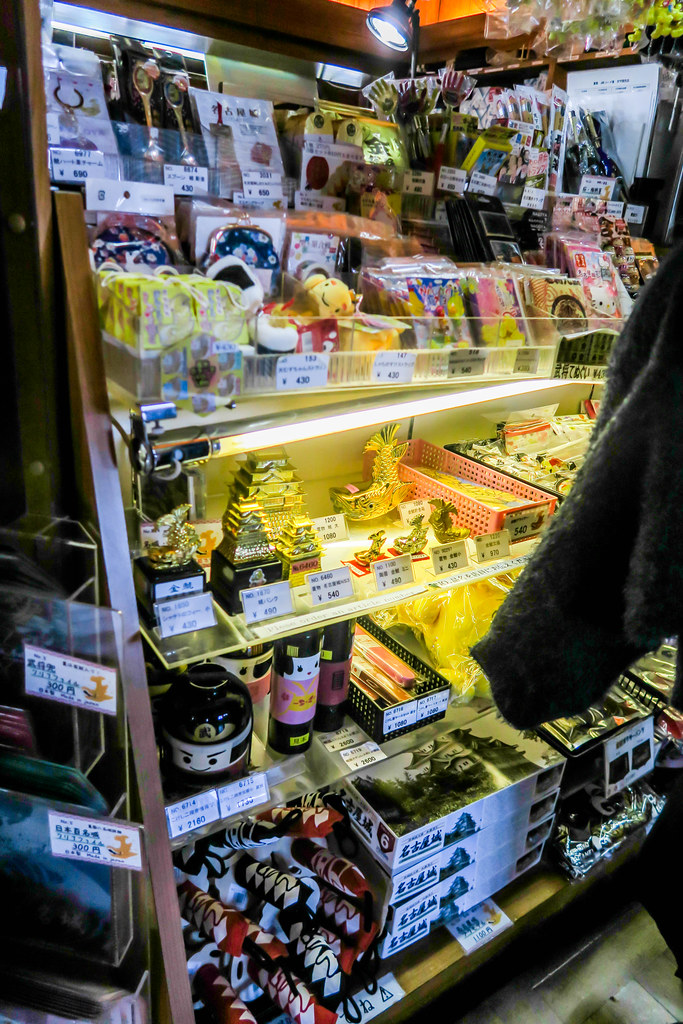
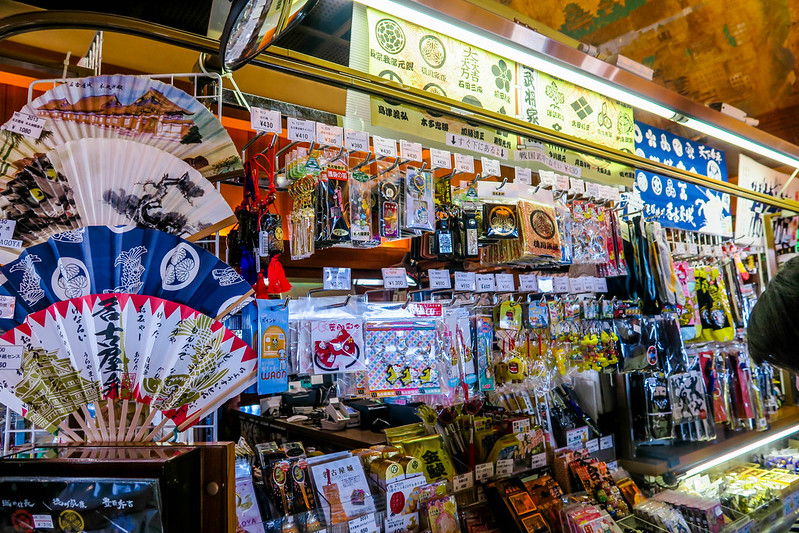
When you climb to the top, you can see outside the top floor of Nagoya Castle overlooking the city and also, inside is the merchandise store.
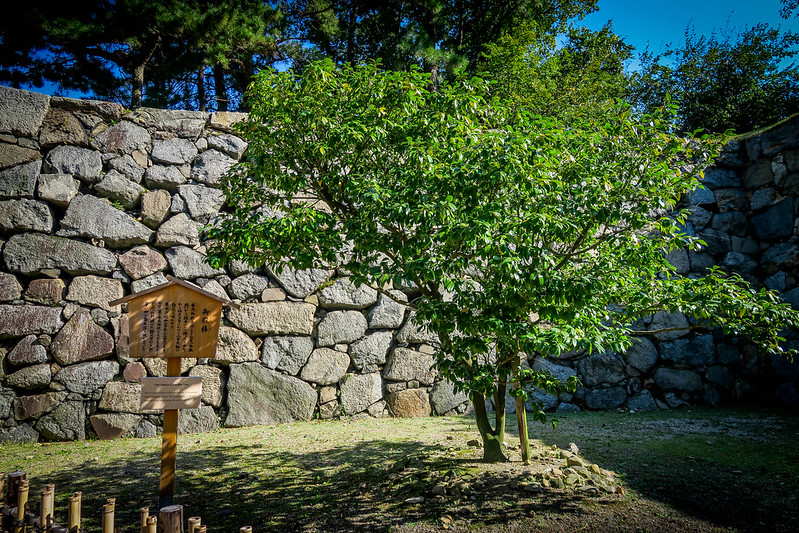
There was once a camellia tree somewhere in the garden south of the Honmaru Palace. Since the Edo period this tree was considered to be a secret treasure of the Owari domain. Every spring it would bloom with large white flowers. The original tree was thought to have been killed when the castle burned down during an air raid in 1945, but new buds started to grow from the charred stump. The current tree was grafted from the original in 1955 and continues to grow today.

During the Edo period, Nagoya Castle was the centre of one of the most important castle towns in Japan—Nagoya-juku— and it included the most important stops along the Minoji, which linked the Tōkaidō with the Nakasendō.
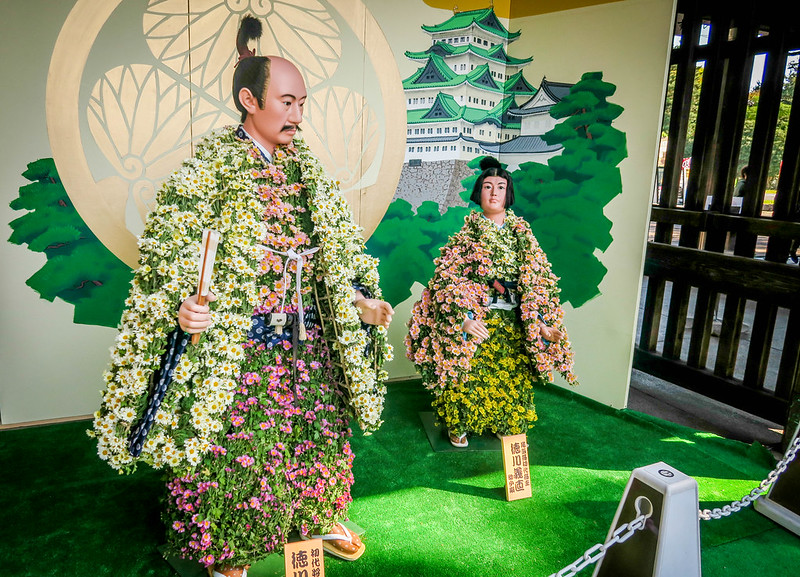
The original castle at Nagoya was located near the site of the later Ninomaru residence. Oda Nobuhide seized it from Imagawa Ujitoyo in March 1532 (Kyōroku 5). He moved in and changed the name to Nagoya Castle. Oda Nobunaga was supposedly born there in 1534 (Tembun 3), although this is subject to debate. After he defeated Oda Nobutomo at Kiyosu Castle in April 1555 (Kōji 1), he established his residence there.
After various upheavals in Japan, Tokugawa Ieyasu emerged victorious. He decided in November 1609 (Keichō 14) to rebuild the castle at Nagoya. Up until the Meiji Restoration, Nagoya Castle would flourish as the castle where the Owari branch, the foremost of the three Tokugawa clan lineages, resided. Castle construction technology had been extensively developed and consolidated since the construction of Azuchi Castle in 1576 by Oda Nobunaga (1534–1582).
One of the main architects who designed and directed the building of the castle was Nakai Masakiyo, who was previously involved in the construction of the Nijo, Fushimi, Edo, and Sunpu castles. He had gathered and refined existing castle and fortification construction technology and techniques and ultimately formulated the standards for the Tokugawa Shogunate’s castles, as exemplified by Nagoya Castle.
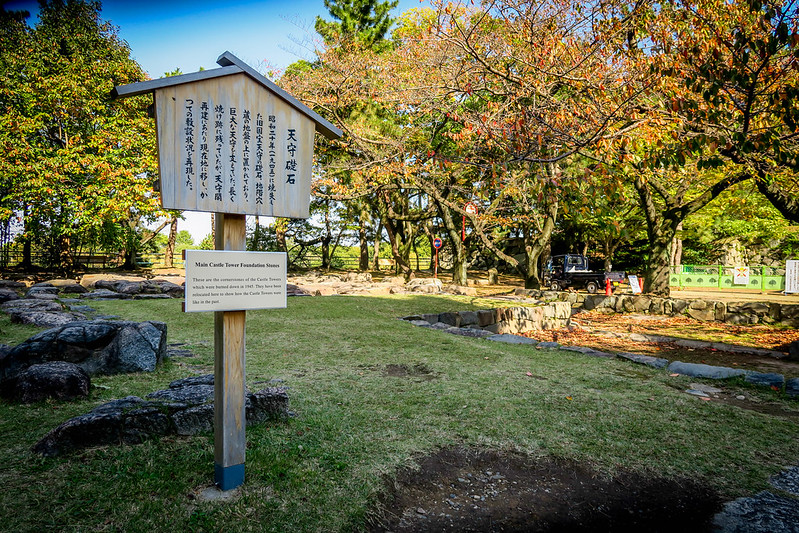
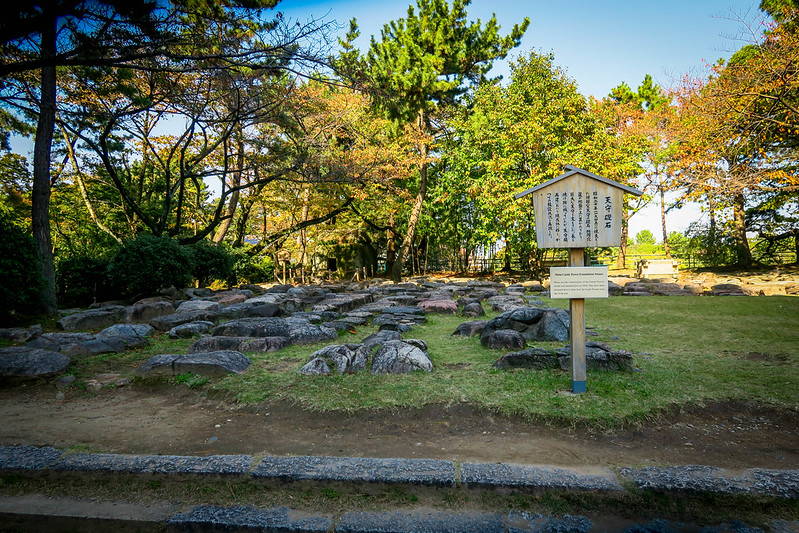
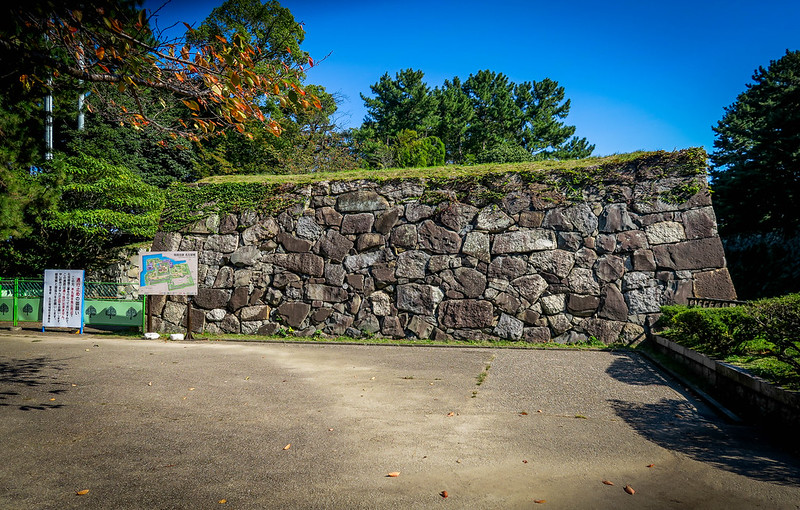
During World War II, the castle was used as the Tokai district army headquarters and the main POW camp in Nagoya, although it held no POWs and was just the administration office. The aerial bombardments of Nagoya by the United States Army Air Forces as part of the air raids on Japan brought the most destruction to the castle in its entire history. In January 1945 (Shōwa 20), the Sarumen Tea House was destroyed in air raids. On May 14, the main donjon, small donjon, golden dolphins, Honmaru Palace, northeast turret, and other buildings were completely destroyed in air raids. In June of that year, some of the paintings saved from the Honmaru Palace were moved for safekeeping to the Haiho Shrine, Toyota-shi. These returned from the shrine in May 1946 (Shōwa 21).
The castle’s surviving former national treasures, which included the southwest, southeast, and northwest turrets, the Omote-Ninomon Gate, and some the Honmaru Palace paintings were redesignated as Important Cultural Assets by the national government. In 1953 the southeast turret was dismantled for repairs. The Ninomaru Garden was designated a place of scenic beauty. In June 1955 (Shōwa 30), most of the Honmaru Palace paintings—and exactly a year later, the ceiling panel paintings—were designated national important culture assets. In 1957 (Shōwa 32), reconstruction of the castle donjons was started. Second-generation golden dolphins were cast in the Osaka Mint and transported to the castle.
On October 3, 1959, reconstruction of the two donjons was complete, and the buildings were opened to the public. The next couple of decades saw further renovation work. In March 1964 (Shōwa 39), the northwest turret was dismantled for repairs. In 1967 (Shōwa 42), the Ninomon of the western iron gate was dismantled for repairs. In 1972 (Shōwa 47), the stone walls at the west side of the East Iron Gate of the Ninomaru were dismantled. The wooden Ninomon was dismantled and later rebuilt at the east Ninomon Gate of the Honmaru.
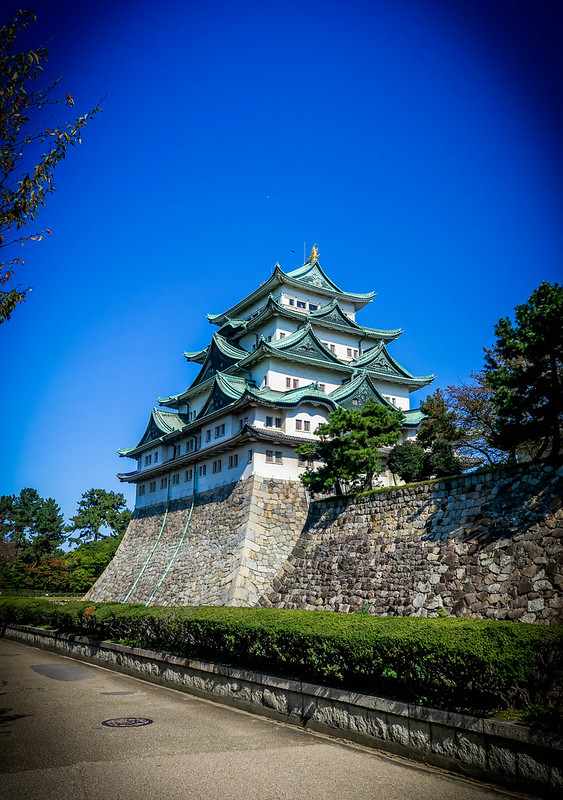
When you go inside the Nagoya Castle, you are taken to various floors to explore artwork, historical information and statuettes showcasing the history of the castle.
The first floor is where one can get a glimpse of a gold dolphin (kinsachi) but the top floor gives people access to view Nagoya from the top of the castle and also purchase tourist merchandise.
As you head outside of the castle, you may see people gathered for a show outside the castle.
The castle is very interesting to visit, especially if you are into the history of the castle. But a few days ago, warning signs were put outside of the castlegrounds by Nagoya Mayor Takashi Kawamura and tourism officials of the municipal government. The warning is to alert people to the danger of the tower toppling in the event of a strong earthquake.
Nevertheless, Nagoya Castle is a beautiful sight and an important place for one to visit if they are planning to visit Nagoya.
Here are a few videos that were shown Live on my Facebook site:
